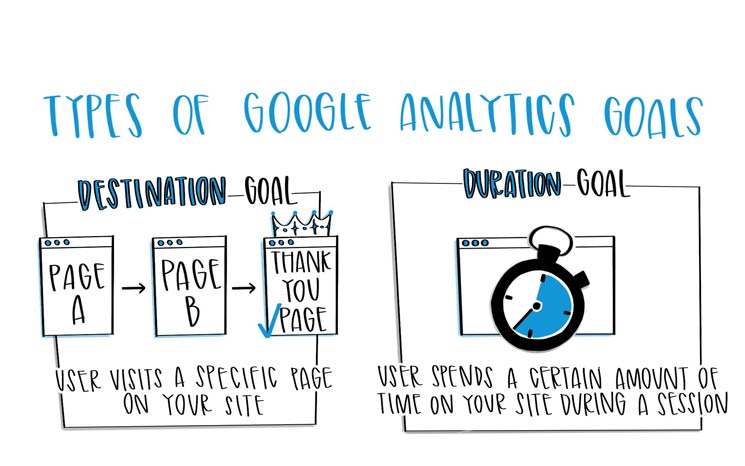Unveiling the Blind Spots: Recognizing What Google Analytics Goals Can not Determine
In the world of electronic analytics, Google Analytics stands as an effective tool for tracking and evaluating on-line customer interactions. Comprehending what Google Analytics goals can not measure is crucial for gaining a thorough view of customer habits and interaction.
Customer Habits on External Platforms
Recognizing how users interact on external platforms is critical for maximizing on-line techniques. Outside platforms, such as social media networks, recommendation sites, and online forums, play a considerable role in driving traffic to a firm's website. By assessing user actions on these platforms, businesses can acquire beneficial understandings right into the effectiveness of their advertising initiatives and the preferences of their target market.
One secret aspect of individual actions on external systems is the referral resource. By tracking where the users are coming from, services can identify which systems are driving the most traffic to their website. This information can aid firms assign their resources more properly, concentrating on the platforms that yield the best outcomes.

Offline Interactions and conversions
Examining individual actions on exterior platforms provides valuable understandings right into on the internet methods; nevertheless, thinking about offline conversions and interactions is equally crucial for a detailed understanding of a business's general performance. While Google Analytics excels at tracking online communications, it falls short in capturing the complete consumer trip that commonly includes offline touchpoints. Offline conversions, such as in-store purchases or phone questions, play a significant role in several companies' success. Disregarding these communications can cause an altered view of the effectiveness of marketing campaigns and total organization efficiency.

Attribution Beyond Last Click
When diving right into the world of electronic marketing analytics, it comes to be necessary to look past the solitary touchpoint of the last click for a more comprehensive understanding of attribution. While Google Analytics supplies important understandings right into customer actions, counting solely on last-click attribution can be restricting - what data is google analytics goals unable to track. Attribution designs that exceed the last click use an extra nuanced sight of the consumer trip, taking into consideration all the touchpoints that lead to a conversion
Attribution beyond the last click allows marketing professionals to appoint credit score to different interactions along the conversion course, giving a more clear image of the efficiency of various advertising and marketing networks. By checking out multi-touch attribution versions such as direct, time decay, or position-based attribution, businesses can better allocate their marketing budgets and maximize their techniques for optimal influence.
Recognizing the impact of each touchpoint in the conversion procedure is important for making informed decisions and making the most of ROI. By embracing acknowledgment beyond the last click, organizations can get deeper understandings into client actions and customize their marketing initiatives better.
Cross-Device and Cross-Browser Monitoring

Likewise, cross-browser monitoring enhances cross-device tracking by capturing individual habits as they change in between different web internet browsers. Recognizing just how users interact with sites on various web browsers can help marketing professionals maximize their online experiences to ensure uniformity and performance across various platforms.
Qualitative Information and Individual Intent
Comprehending individual intent with qualitative information evaluation is essential for developing targeted digital advertising methods that resonate with the requirements and preferences of the target audience. Qualitative data offers insights into the 'why' behind customer activities, dropping light on motivations, emotions, and choices that measurable data alone can not capture. By analyzing user responses, remarks, and interactions, marketing experts can reveal beneficial info regarding user intent, permitting them to customize their messaging, web content, and offerings to much better line up with what their audience is looking for.
Qualitative data also aids in comprehending the context in which individuals engage with a web site or app. This contextual understanding makes it possible for marketing experts to produce more personalized and pertinent experiences, inevitably driving higher interaction and conversion prices. By delving right into individual intent through qualitative information analysis, organizations can get a deeper understanding of their target market, resulting in extra efficient advertising and marketing methods that fulfill users' assumptions and needs.
Verdict
In final thought, Google Analytics objectives have restrictions in gauging individual actions on external platforms, offline conversions, acknowledgment beyond last click, cross-browser and cross-device monitoring, and qualitative data associated with user intent. what data is google analytics goals unable to track. It is necessary for businesses to be familiar with these dead spots in order to supplement their data analysis with various other tools and techniques to obtain a more thorough understanding of their audience and enhance their total electronic marketing methods
By analyzing individual habits on these systems, businesses can acquire useful insights into the read here efficiency of their marketing efforts and the choices of their target audience.
Evaluating customer actions on outside systems gives valuable insights right into on-line strategies; however, taking into consideration offline conversions and communications is just as necessary for a comprehensive understanding of a company's overall efficiency.In electronic advertising analytics, moving beyond last-click attribution to explore cross-device and cross-browser tracking is vital for getting an alternative understanding of individual interactions across various platforms and devices. By analyzing customer responses, remarks, and communications, marketing experts can uncover beneficial details concerning individual intent, enabling them to tailor their messaging, content, and offerings to much better line up with what their audience is seeking.
By delving right into individual intent through qualitative data evaluation, businesses can acquire a deeper understanding of their target audience, leading to extra effective advertising methods that fulfill users' needs and assumptions.